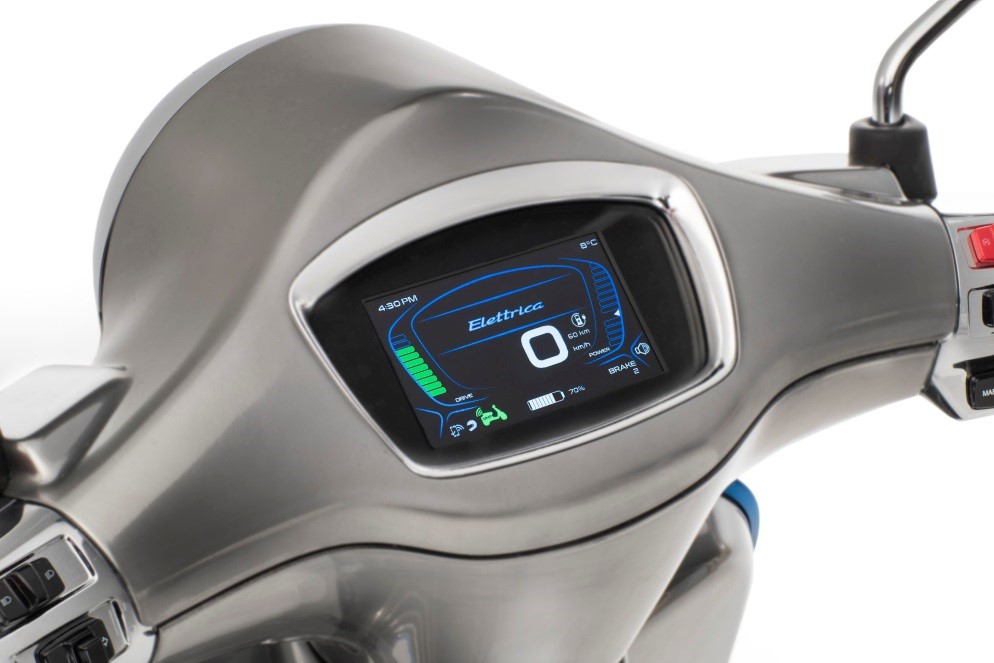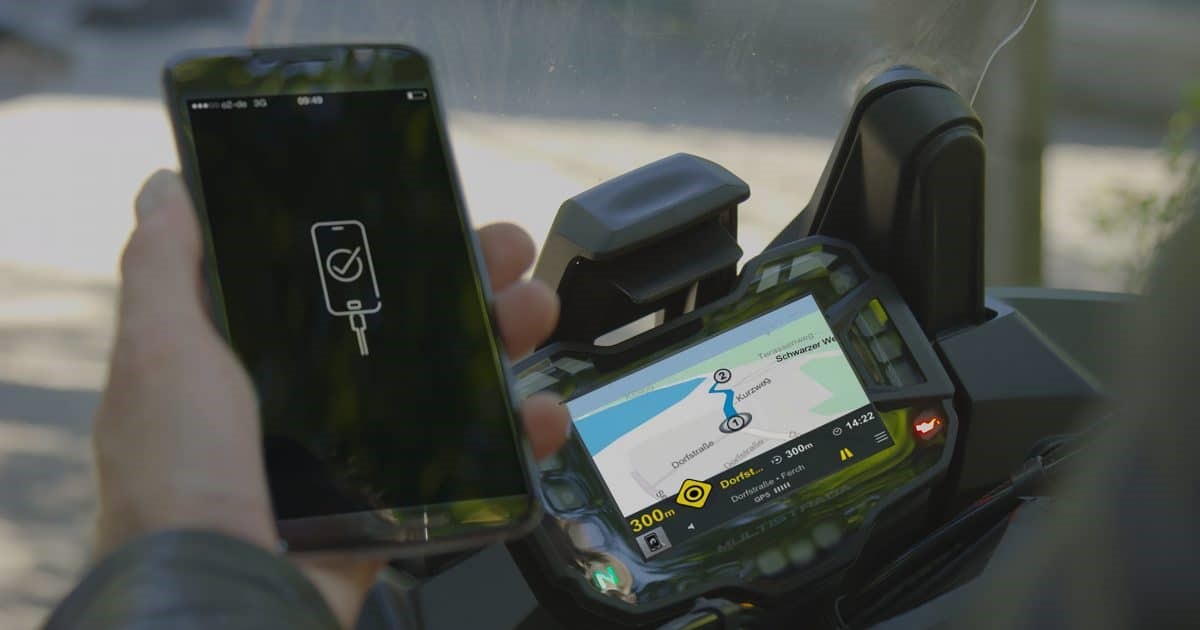Infotainment v/s Instrument Cluster: Why a Digital Instrument Cluster is an Ideal Low-Cost Solution for Electric Scooters
Information is indispensable, especially when you’re driving. To ensure a comfortable and safe ride, the driver must have an access to critical information, pertaining to the vehicle, in a way which is easy to understand and doesn’t unnecessarily distract the driver.
Since time immemorial, Instrument Cluster has played a pivotal role in fulfilling the above mentioned requirements.
An Electronic Instrument Cluster makes available data like Speed, Fuel Gauge (Petrol/Diesel/Oil Levels), and Engine Temperature, Distance and certain warnings and alerts.
Courtesy the in-roads of In-vehicle Mobility, Connected Car and other Digital Technologies, our humble Electronic Instrument Cluster has evolved into a Digital Instrument Cluster.
This Digital Transformation has paved the way for Digital Cockpit experience for the end-users.
In this blog, we will focus on one of the interesting chapters of this digitalization journey. We will throw some light on the role of Digital Instrument Cluster as a low-cost alternative of an Infotainment System, for the next generation Electric Scooters or Electric Two-Wheelers.
So, let’s get the ball rolling with some introductions!
What is an Electronic Instrument Cluster (in the context of Automotive)?
Automotive Instrument Clusters comprise of various displays and indicators which enable a driver to operate the vehicle appropriately.

Among the displays in such a cluster are
- Speedometer
- Tachometer
- Odometer
- Fuel gauge
- Oil pressure gauge
- As along with different indicators for system malfunctions and warnings.
While these are the primary components of an Instrument Cluster, the Digital Avatars offer many additional features such as turn-by-turn navigation systems, Bluetooth connectivity, and more.
Infotainment System v/s Instrument Cluster
Based on the features supported, the key differences between the two can be summarized through the following table:
| Features Supported | Infotainment System | Instrument Cluster |
| Display screen specs | 7 inches | 5 inches |
| Hardware | Application processors (Snapdragon, NXP’s IMX8 Series, Renesas’ R-Car) | Microcontrollers (STMicroelectronics, PIC microcontrollers) |
| Audio Playback Supported | Yes | No |
| Video | Yes | No |
| Camera | Yes | No |
| Smartphone sync | Yes | No |
| Real-time Map/ route display | Yes | No |
| Turn by Turn Navigation | Yes | Yes |
| Alerts | Yes | Yes |
| Support for FOTA (Firmware-Over-The-Air) update | Yes | Yes |
| Advanced Graphics | Yes | No |
| Trace and Track /Find my Bike | Yes | Yes |
So, in effect, infotainment systems offer options for entertainment and information like audio playback, video, camera, Smartphone sync, and enable the user to have an interactive control over what is displayed.
On the contrary, instrument clusters are more like radios which relay information without facilitating user interaction.
Infotainment Solution v/s Digital Instrument Cluster: What is the take of Electric Scooter OEMs’?
Currently, the OEMs’ of the Electric Scooters are opting for one of the following two approaches:
- High-end infotainment solutions: Loaded with an intuitive GUI, Bluetooth Controlled Smartphone Integration & phone call management, audio/video Playback, real-time maps, Commercial vehicle-specific navigation system among other capabilities. Such systems require investment in software and hardware modules and hence have a higher per unit cost.
These solutions are ideal for Electric Scooters that are being sold at the price-point of $100 to $500. Ather Energy, an Indian EV start-up is a leading example in this case.

Typical example of a Two-wheeler infotainment solution. Image Source: Bosch - Instrument Clusters: On the other side, there are other set of OEMs’ whose focus is to enable display of crucial vehicle information on the dashboard while supporting cloud connectivity.
Information services offered by such systems include battery health status, locating the nearest EV recharge station, distance covered, etc. Such systems will act as information only systems or in other words, instrument clusters. A big player in this sector is Bajaj.
What Makes Instrument Cluster a Low-Cost Option, as Compared to an Infotainment System?
A major factor influencing manufacturers to go for sophisticated instrument clusters as against a full-fledged infotainment solutions is the cost saving.
Instrument clusters are considered a low-cost option as compared to infotainment systems, and there are several reasons behind this.
- One, instrument clusters offer much-limited information; only that which is necessary for the driver.
- Two, the area requirement for an instrument cluster on a vehicle’s dashboard is pretty concise (5 inch display v/s 7 inch display).
- Three, an instrument cluster is designed on a microcontroller platform, whereas an infotainment system is powered by an application processor.
By definition, an application processor is a much costlier option than a microcontroller. A microcontroller includes some motors, LEDs, and sensors which require perfect time control. It can’t perform heavy computation owing to its limited memory and computation capabilities. On the other hand, a microprocessor has GBs of memory and can perform heavier computations.
The per unit cost of MCU from STMicroelectronics is around 1.95 USD, while the i.MX 8M Application process would cost around 57.24 USD per unit.
Saying that the two-wheeler industry is fast moving on the road to implementing instrument clusters is one thing and actually bringing that into action is another. There are several hurdles to be crossed and multiple risks to be taken. Let’s look at a few.
Challenges Faced by the Two-Wheeler Industry in Implementing Digital Instrument Clusters
Some of the key challenges faced by the two-wheeler industry in implementing digital instrument clusters can be summarized as follows:
- The cluster will need a powerful microcontroller with graphics controller capability to drive the display.
- Owing to the software requirement to render the digital cluster’s graphics, an RTOS becomes a necessity.
- Need for expertise: Automotive Engineers who have expertise in analog cluster solutions will need to unlearn and re-learn while moving to the environment of a digital cluster.
- Inculcating Functional Safety best practices in the development of instrument clusters can get tricky
This entry was posted in Embedded Blog, Blog by Embitel. Bookmark the permalink
SUBSCRIBE
ASK OUR EXPERTS
POPULAR TAGS
RELATED SERVICES
Car HUD (Heads-up Display)
Go-to-market in 6 months with our automotive grade hardware and software design
Automotive Control Units
Electronic Control Units (ECU) development services for Body Control Modules (BCM), Powertrain, Chassis and Infotainment
AUTOSAR Software Services
AUTOSAR MCAL development, RTE and BSW integration, Application Layer development, Tools configuration and code generation
CUSTOMER SUCCESS STORIES

J1939 Stack for advanced EPS system
Find out how J1939 stack resolved on-chip memory issue for an Automotive Tier-I supplier

Software re-engineering | Telematics applications
Modular architecture re-design across fleet management product lines - GPS fleet security, vehicle and trailer tracking

IoT based Home Automation system
Design and development – Sensor Networks, Custom IoT gateway, Cloud and Mobile App



















